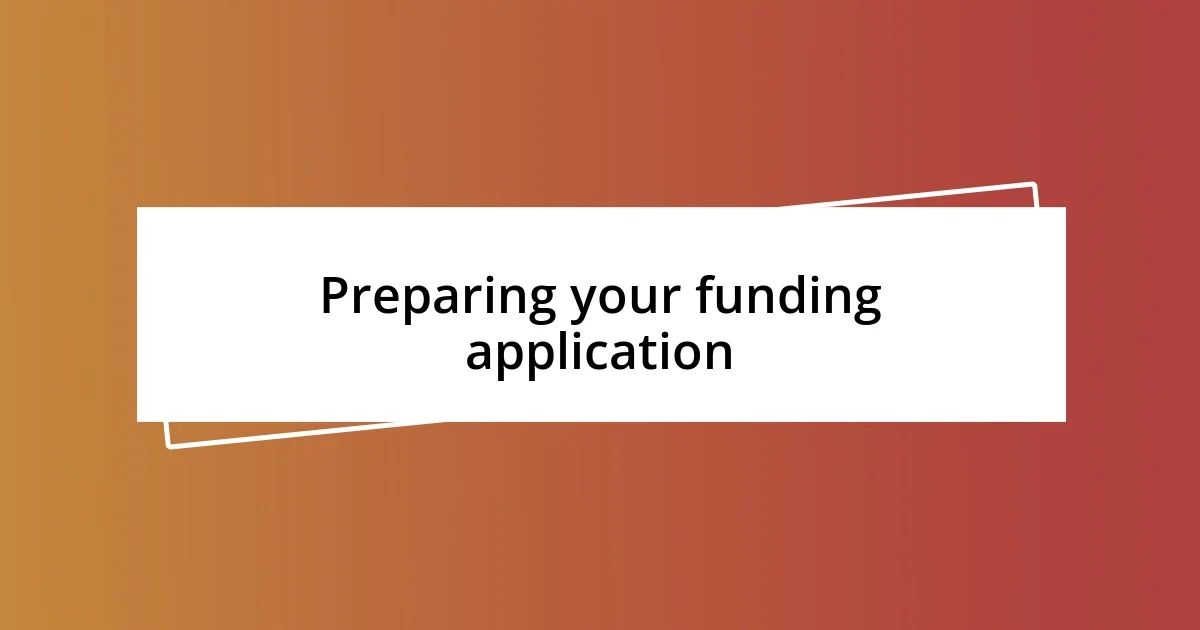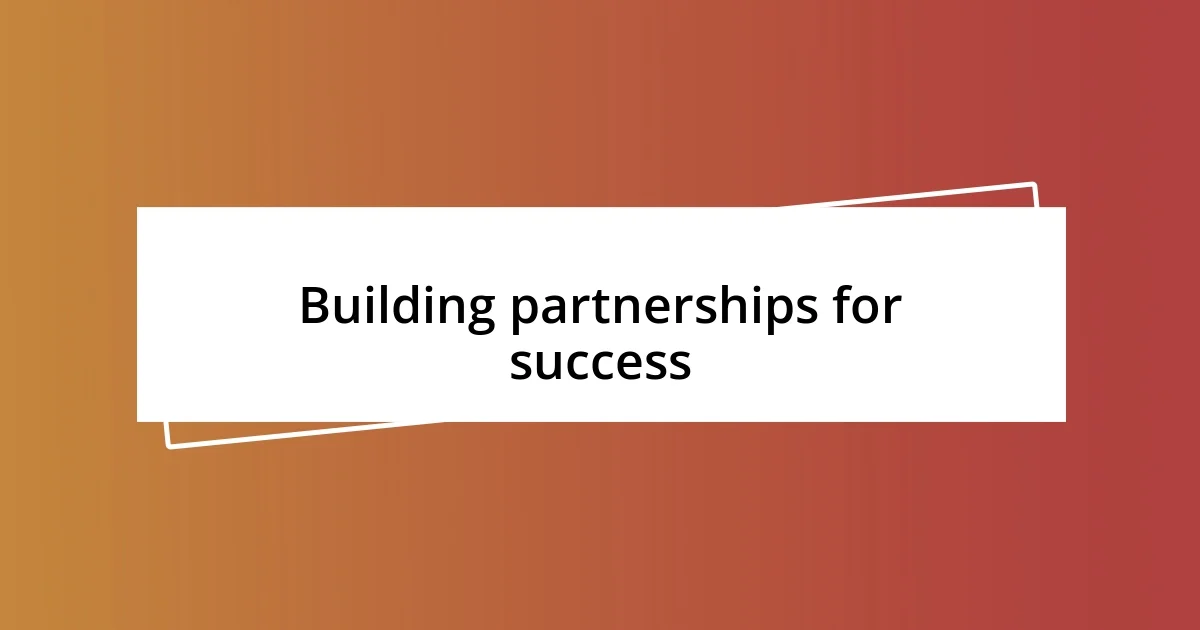Key takeaways:
- Engaging with community members reveals their unique health needs and builds trust, fostering tailored solutions and support.
- Successful funding applications prioritize clarity, alignment with funder goals, and compelling storytelling that includes community testimonials.
- Sustaining funding involves strategic diversification, transparent communication with stakeholders, and celebrating achievements to foster community support.

Understanding community health needs
Understanding community health needs requires more than just statistics; it’s about really listening to the stories of the people within that community. I still remember walking through our local neighborhood and chatting with residents, who shared their struggles—like access to affordable healthcare or the challenges of mental health stigma. Their lived experiences painted a vivid picture of what truly mattered to them and helped me see beyond mere data.
It often surprises me how varied health needs can be, even within seemingly similar communities. For instance, I once engaged with a community group focused on diabetes prevention, and it became clear that cultural attitudes toward diet and exercise played a significant role. How often do we stop to consider that our health programs must align with the unique beliefs and behaviors of the people we aim to serve?
I found that involving community members in discussions not only illuminated their needs but also nurtured trust. One moment that stands out was when a mother expressed her frustration about the lack of pediatric services, which then sparked a passionate dialogue among attendees. This engagement revealed a deep sense of urgency and the need for tailored solutions, igniting my commitment to advocating for funding that truly addresses these pressing health issues.

Identifying funding sources available
Identifying funding sources can sometimes feel like searching for a needle in a haystack, but I’ve learned that being systematic really pays off. I began by mapping out various avenues, such as government grants, private foundations, and corporate sponsorships. One of the most rewarding experiences I had was attending workshops hosted by local health departments, where peers shared insights about their own successes in securing funds. It wasn’t just informative; it also fostered a sense of community among us as we exchanged ideas.
In my approach, I always prioritize establishing relationships over simply checking boxes. I recall reaching out to a foundation I had been eyeing for possible collaboration. Instead of pitching directly, I asked for a meeting to discuss shared goals and values. That conversation paved the way for a fruitful partnership that eventually led to securing funding for a mental health initiative in our community. Such connections often reveal funding opportunities that aren’t widely publicized or included in typical databases.
When differentiating among funding sources, it’s crucial to consider their specific focus areas and application processes. For example, some foundations may prioritize health disparities, while others focus on preventive care or innovative program designs. Understanding these nuances helped me tailor my proposals to align perfectly with each funder’s mission and objectives.
| Type of Funding Source | Key Characteristics |
|---|---|
| Government Grants | Often competitive; require exhaustive applications; public funds with large potential amounts |
| Private Foundations | Flexible in funding strategies; relationship-driven; often support specific causes or populations |
| Corporate Sponsorships | Focus on community engagement; may provide in-kind support; brands looking to enhance their public image |

Preparing your funding application
When preparing your funding application, I find that clarity is paramount. My approach has always been to meticulously outline the project’s objectives and align them with the funding source’s mission. I vividly remember crafting an application late into the night, fueled by coffee and passion. It was the thrill of putting our community’s needs into words that kept me going. Paying attention to guidelines and adhering to specific requirements were not just formalities; they were crucial in making our proposal stand out in the crowded field of applicants.
Here’s a checklist that I found helpful while preparing my applications:
- Understand the funder’s priorities: Research their past funding patterns and focus areas.
- Define your project clearly: Articulate your goals, objectives, and anticipated outcomes succinctly.
- Gather supportive data: Include relevant statistics and testimonials from community members to strengthen your case.
- Create a budget: Outline a realistic budget that aligns with your proposal and showcases your project’s sustainability.
- Seek feedback: Before submission, have colleagues or community members review your proposal for clarity and impact.
Taking these steps can set you on a path toward success. One time, after submitting an application without thoroughly reviewing it, I overlooked a critical section, which taught me the importance of meticulous preparation. Each proposal is an opportunity to not just seek funding but to tell a compelling story that advocates for the community’s needs.

Building partnerships for success
Building partnerships requires a genuine investment in cultivating relationships. I remember attending a community workshop where I nervously approached a local healthcare leader. Instead of just exchanging business cards, I initiated a conversation about our shared challenges in addressing community health needs. That simple interaction blossomed into a partnership that not only enhanced our initiatives but also created a network of support that was invaluable during grant applications.
Establishing trust is essential in partnership building. I often find myself reflecting on a time when I collaborated with a small nonprofit. We recognized the power of grassroots movements in our area. By pooling resources and sharing narratives, we secured funding that we might not have accessed alone. Knowing that our work was amplified by one another’s strengths feels rewarding; it’s a reminder that success in community health often stems from unity rather than individual efforts.
Moreover, I believe in listening actively to potential partners. What drives them? What challenges do they face? Engaging in meaningful dialogue often unveils opportunities for collaboration that may not be immediately apparent. There was a moment when I sat down with a local business owner who expressed frustrations about community engagement. By exploring mutual interests, we eventually launched a health fair together, directly addressing the community’s needs. It taught me that great partnerships often begin with understanding and shared purpose.

Navigating the grant writing process
Navigating the grant writing process can feel daunting, especially given the sheer volume of applications out there. I still remember my first attempt at grant writing, where I felt lost in a sea of jargon and conditions. When I finally broke down the requirements into simple steps, it was like finding a light switch in a dark room. Focusing on clarity and purpose with each section of my application not only helped me formulate a coherent proposal but also gave me the confidence to express the true essence of our project.
Writing a compelling narrative is often the heart of any successful application. I’ve learned that storytelling isn’t just for novels; it can be a robust tool in grant applications. One memorable application I crafted revolved around the personal testimonies of community members affected by health disparities. Sharing their stories transformed a dry proposal into a heartfelt narrative that resonated with reviewers. Isn’t it fascinating how a few personal anecdotes can bridge the gap between statistics and humanity? That experience solidified my belief that infusing emotion and real-life experiences into an application leads to deeper connections with the funders.
Lastly, I can’t stress enough the importance of consulting with peers during the writing process. In one instance, I was on the verge of submitting a proposal when a colleague nudged me to share it with a more seasoned grant writer. Their insights not only highlighted the areas that needed refinement but also illuminated aspects of our initiative that I had initially overlooked. How often do we underestimate the value of collaboration? In my experience, seeking feedback can transform a good application into a great one, ensuring that every word carries weight and purpose.

Measuring impact and outcomes
Measuring impact and outcomes is vital to understanding the true effectiveness of our initiatives. I recall one specific project where we aimed to reduce obesity rates in our community through nutrition workshops. Initially, I was overwhelmed by the prospect of quantifying our success. However, I realized that tracking attendance and gathering feedback through surveys provided not just data but also insightful stories from participants about their lifestyle changes. Isn’t it incredible how numbers can tell a story of human transformation?
As I dove deeper into evaluating our outcomes, I discovered the importance of qualitative data alongside quantitative metrics. For instance, by conducting interviews with participants post-workshop, I unearthed powerful testimonials about newfound confidence in cooking healthy meals. This qualitative evidence complemented our attendance figures beautifully. It made me think, how often do we neglect the human element in our data-driven world?
Additionally, sharing these insights with stakeholders helped forge stronger relationships and build trust. I vividly remember presenting our findings at a community health forum. As I shared not just the stats but the heartfelt stories of real change, I saw a shift in the audience’s engagement. Seeing their reactions showed me that outcomes aren’t just about numbers; they resonate with our shared humanity. This experience reminded me that effective impact measurement is multi-faceted, encompassing both metrics and the underlying narrative of community growth.

Sustaining funding over time
Sustaining funding over time requires a strategic approach and, quite frankly, a bit of creativity. I remember a project we initiated to improve mental health services in our community. After securing an initial grant, I realized that maintaining stakeholder interest would be paramount. So, I committed to regular updates, not just on our successes, but also on challenges we faced along the way. Who doesn’t appreciate a little transparency, right? This open communication helped in nurturing long-term relationships that evolved into partnerships, solidifying our funding prospects.
In my experience, diversifying funding sources can also play a huge role in sustaining financial support. When one grant ended, I didn’t want to put all my eggs in that basket again. I sought not only governmental grants but also local businesses and individual donors. Crafting tailored pitches for each audience was essential. For instance, one local business responded positively to a proposal that linked their brand to our community health goals. Isn’t it fascinating how appealing to local pride can motivate more than just financial support?
Lastly, I found that showcasing our achievements creates momentum and fuels further investment. After a year of implementing health programs, we organized a community event to celebrate our successes. It wasn’t just about the numbers; it was about showing the impact in real terms. I shared stories of individuals who benefited and recognized key partners in front of the community. The gratitude in the air was palpable. This not only reinforced existing relationships but also attracted new supporters. Have you ever noticed how people love being part of a success story? Those moments remind me that sustaining funding isn’t just about finance; it’s equally about fostering community and connection.














